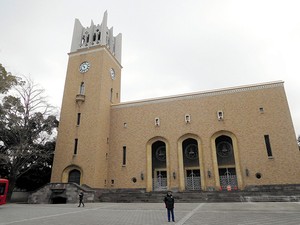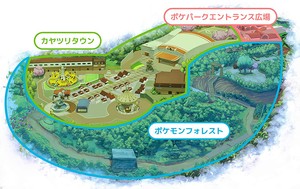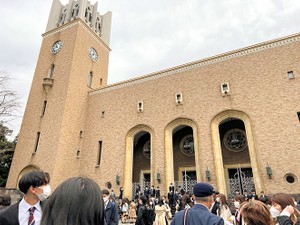THE ASAHI SHIMBUN
April 12, 2025 at 08:00 JST
Ibaraki Governor Kazuhiko Oigawa brought a powerful recruiting pitch with him last year when he flew to India.
Attractive salaries and a wide range of job opportunities awaited in his prefecture for young talent, a match made in heaven.
“India now has the largest population all over the world, with its unemployment rate being high among young people,” Oigawa said in July 2024 at a news conference after returning from his Indian trade mission.
He continued, “Ibaraki Prefecture and other parts of Japan are struggling to secure personnel due to the shrinking number of residents. I saw firsthand that our collaboration with India can form mutually beneficial relationships.”
During his visit, Oigawa signed a memorandum of understanding (MOU) with Amity University, a prestigious Indian comprehensive private school. The aim is to create an environment where workers from India can be accommodated in Ibaraki Prefecture after finishing their school curriculums.
In line with the MOU, Ibaraki Prefecture instituted a Japanese education program at Amity University in September 2024.
As many as 130 juniors applied for the program that was limited to 30 students. For now, 37 students are enrolled in it, taking a pair of classes weekly over two years for mastering Japan’s culture and business practices as well as the language.
Ibaraki similarly organized a local inspection tour in February 2025 for the benefit of companies within the prefecture that are interested in employing workers from India.
Participants traveled to Amity University in particular among other destinations and interacted with students studying in the Japanese course.
Ibaraki is looking to incorporate an intern system for the Japanese lesson takers to work at enterprises in the prefecture at some point. A matchmaking framework is alike eyed to refer new graduates to businesses in Ibaraki.
Starting with one in Vietnam in 2019, Ibaraki Prefecture has concluded a total of 10 MOUs to date. All three deals signed in 2024 were from India.
YOUNG, ENGLISH-SPEAKING TALENT
Ibaraki Prefecture currently places particular emphasis on the Indian labor force, craving workers with advanced skills in information technology and other fields along with medical service providers such as nursing care staff.
A prefectural representative cited numerous advantages of human resources from India.
India, with the world’s largest population exceeding 1.4 billion, has an average age as young as 28. Additionally, Indians are active in going abroad, driven by the difficulty in finding domestic employment. Of course, they are proficient in English.
“Even if only a tiny percentage of the people show an interest in Ibaraki Prefecture, we can expect to secure a substantial workforce given the nation’s vast overall population,” said the prefectural official.
MOTIVATED BY POP CULTURE
While it will take some time for workers from India to arrive in Ibaraki based on the 2024 MOU, some business operators in the prefecture have already embarked on recruitment drives targeting Indians.
Taku Sante, 31, who majored in Japanese at an Indian graduate school, joined the general planning division of trading house Sekisho Corp. at Tsukuba, Ibaraki Prefecture, in October 2024.
Sante is responsible for the company’s recruiting events held in India, among other duties.
“I am happy that I can link India with Japan via my work, making full use of my skills in Japanese, my favorite language,” Sante said.
Sekisho decided to hire five Indians in 2024. This inspired Ibaraki Prefecture to turn to the labor market in India.
According to Sante’s accounts, “Pokemon,” “Doraemon” and other anime titles from Japan are especially popular in India.
“A lot of people feel a sense of familiarity with Japan,” Sante said. “Japan has an image of being clean and safe.”
Sante said she thus felt at ease about traveling to Japan.
Personnel from India have been deployed to the nursing care industry as well.
Seihokai, a social welfare corporation in Chikusei, Ibaraki Prefecture, welcomed four Indian staff members in December 2024 under the “specified skills” visa system designed to bring more foreign workers to Japan.
Dispatched to a care facility for elderly people requiring special treatment, Kambel Rashmi, 25, is training herself to help senior residents eat, bathe and change diapers.
Rashmi is taking full advantage of her professional experience, as she formerly served as a nurse in the intensive care unit (ICU) of a medical center in India after graduating from a nursing school.
She decided to take the national test for licensed caregivers in Japan in a quest to raise her wages. Rashmi found out that her starting salary in Japan is more than 35 times higher than in India.
Rashmi currently works in Japan while sending money to her family in her homeland.
“It is rewarding for me to have elderly residents thank me,” she said.
SHIFT TO SOUTH ASIA
An Asahi Shimbun survey of Japan’s 47 prefectures and 20 major cities with near-prefectural powers taken in October 2024 revealed that 28, or upward of 40 percent, of respondents had signed 87 MOUs in total, inclusive of one planned for future conclusion.
By partner country, Vietnam was the dominant MOU signatory until 2023. India, which had previously signed no MOUs, suddenly emerged with seven agreements in 2024, surpassing Vietnam's six.
Nepal, another South Asian country like India, made its first appearance on the list in 2023 and signed a total of five MOUs by the time of the survey.
Local governments in Japan started reaching out to South Asia despite the geographical and cultural distances, because they are scrambling to address the dearth of workers following the end of the COVID-19 pandemic.
Regional authorities nationwide are holding a growing sense of crisis about their failure to make up for this dire labor shortage with human resources from Vietnam and elsewhere in Southeast Asia alone.
Another reason is that the per-capita gross domestic product (GDP) for South Asian nations is less than $4,000 (590,000 yen), about one-10th that of Japan. Despite the yen's prolonged weakness, the salary level in the East Asian country remains attractive.
TREND DRIVEN BY YOKOHAMA
Local governments across Japan--particularly in rural regions--have been aggressively resorting to MOUs since 2023 after the end of COVID-19 crisis under what is described as the second boom of this type of international deal.
The first MOU fever came between 2018 and 2019, as Yokohama in Kanagawa Prefecture led the trend.
Hitoshi Matsumoto, the former head of Yokohama’s health and welfare department for elderly citizens, devoted himself to suggesting, designing and instituting the municipality’s MOU program.
“It all started when we received a request for assistance from a care home for elderly individuals needing special treatment that had an international student as a temporary staffer at the time,” recalled Matsumoto.
Matsumoto retraced how his proposed framework proved successful.
“We could successfully build connections with other local governments and college operators (outside Japan) through MOUs,” Matsumoto explained. “Consequently, we began looking more broadly at Asia, resulting in a greater acceptance of workers afterward.”
Concluding MOUs with overseas parties is becoming increasingly common among not only major cities but also smaller municipalities and agricultural cooperatives throughout the country.
(This article was written by Junko Miyasako and Makoto Oda.




















A peek through the music industry’s curtain at the producers who harnessed social media to help their idols go global.
A series based on diplomatic documents declassified by Japan’s Foreign Ministry
Here is a collection of first-hand accounts by “hibakusha” atomic bomb survivors.
Cooking experts, chefs and others involved in the field of food introduce their special recipes intertwined with their paths in life.
A series about Japanese-Americans and their memories of World War II